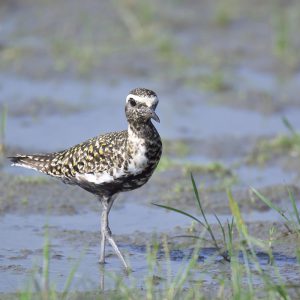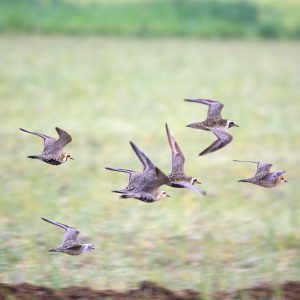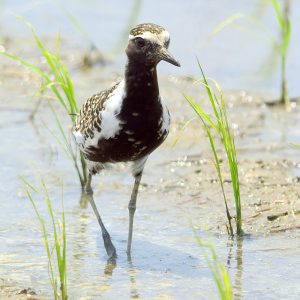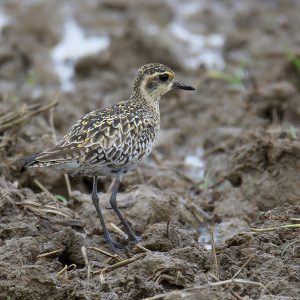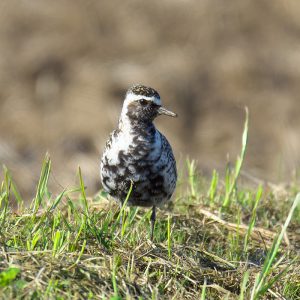むなかたが集まる
電子データベース
電子データベース
ムナグロ
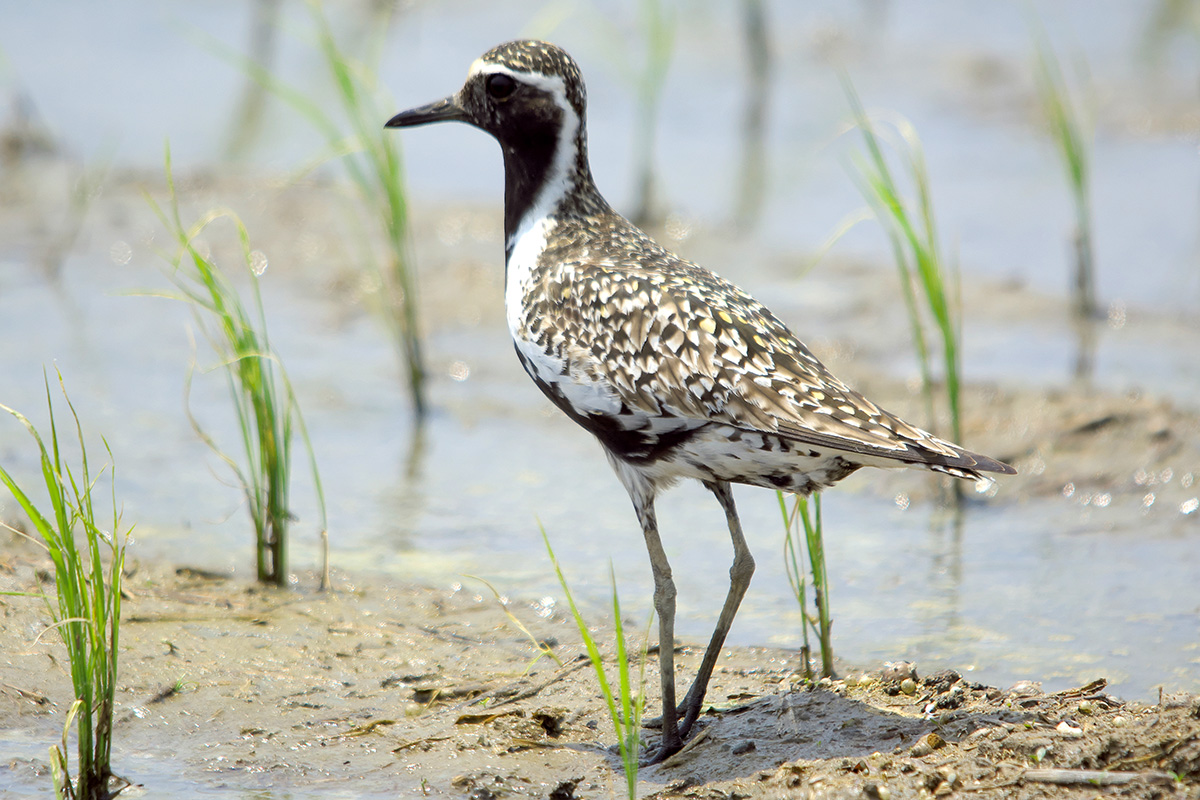
| 種目 | ムナグロ (胸黒) | 分類 |
チドリ目 チドリ科 ムナグロ属 |
学名 | Pluvialis fulva | 英名 | Pacific Golden Plover |
|---|---|---|---|---|---|---|---|
|
ムナグロ (胸黒) |
チドリ目 チドリ科 ムナグロ属 |
Pluvialis fulva | Pacific Golden Plover |
宗像市でみられる場所・時期
宗像では旅鳥で,春秋の渡りの時期に見ることができる。田起しや稲刈りの終わった田圃などで見かけることが多い。
特徴
全長24㎝。雌雄ほぼ同色である。
雄夏羽は,顔から腹まで黒く,額から黒色部にそって白色帯が続いている。脇から下尾筒には黒色横斑がある。頭頂から上面は黄色,黄褐色,淡色,黒色などの斑模様である。翼下面は灰褐色で,腋羽は淡褐色。嘴は黒く,足は灰褐色である。
雌は,黒色部が褐色みを帯び,まばらである。
冬羽は頭部や上面が黄褐色と黒褐色の斑模様で,顔から胸は淡黄褐色,腹から下尾筒は汚白色である。
習性
水田,畑,芝地,河原,埋立地,干潟などに生息するが,海水域よりも淡水域を好む。群れで生活するものが多く,水辺より多少乾燥した場所を好む傾向がある。昆虫類の幼虫やミミズなどをよく食べる。
分布
九州以北では多くが旅鳥で,関東地方以西では越冬をすることもあり,南西諸島では毎年越冬個体がいる。
シベリア北部で繁殖し,南シナ海沿岸,スマトラ島,ジャワ島,セレベス島,ボルネオ島の各沿岸,インド亜大陸西部沿岸などで越冬することが多い。
その他
ムナグロと,ダイゼンはよく似ているので,判別が必要となる。ダイゼンの上面は白か灰色っぽいので識別できる。また,ダイゼンは,飛翔時に見える腋羽が黒いことで,識別できる。
 はじめに
はじめに お問い合わせ
お問い合わせ

